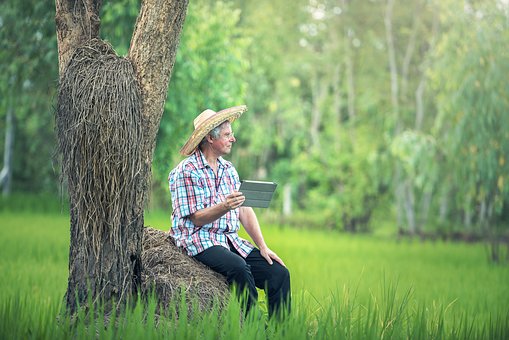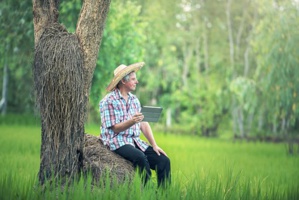Dailycsr.com – 19 November 2018 – Arthur Samuel, a computer engineer from Stanford University, programmed a computer checker game, whereby in a challenge match he beat the then “Connecticut state champion” of checkers with his programme.
However, this victory of the machine over human wits was not recorded in the recent history but it is a fact of 1961. Even decades before the computer revolution stormed ushered in the modern personal computer era, professor Samuel had built the prototype of “machine learning”. The programme was designed to react on the basis of past games. As a result, following several games the machine “learned” to master the game.
This goes to prove that computers are capable of developing skills without being “explicitly programmed” for it. In fact, the same principal used by Arthur Samuel is being applied today in modern agriculture which marks as one of the fastest growing field for AI, as it attempts to find solutions at an “unprecedented scale” with “greater accuracy”.
People who are into breeding plants are all looking for “a specific trait” as they strive to raise crop quality by making it more water efficient, nutrient, adaptive to climate change with increased disease resistant. However, determining the right sequence of genes to tap into a “beneficial trait” in plants is a mysterious affair to begin with, as the breeders are left with “millions of choices” to choose from.
Here comes the role of deep learning algorithms as they analyse “a decade of field data” and can come up with a “probability model”. With the help of advanced software, the process of narrowing down on the likely genes of a “beneficial trait to a plant” can be made more accurate and efficient.
As a result, the breeders get to evaluate a “much wider set of variables”, while scientists are capable of conducting early evaluations to determine the possible performance of a crop variety when faced with “different sub climates, soil types, weather patterns, and other factors”.
However, with the digital method in place one cannot dismiss the “physical field trials”; instead the performance prediction of a crop becomes more accurate.
When it comes to dealing with plant diseases, traditionally it was done through “visual examination”, while leaving room for “inefficiencies” and human error. On the other hand, the machine diagnosis is all about “pattern recognition”. As Monsanto informs:
“After sorting through hundreds of thousands of photos of diseased plants, a machine learning algorithm can spot disease type, severity, and in the future, may even recommend management practices to limit loss from a disease”.
References:
3blmedia.com
However, this victory of the machine over human wits was not recorded in the recent history but it is a fact of 1961. Even decades before the computer revolution stormed ushered in the modern personal computer era, professor Samuel had built the prototype of “machine learning”. The programme was designed to react on the basis of past games. As a result, following several games the machine “learned” to master the game.
This goes to prove that computers are capable of developing skills without being “explicitly programmed” for it. In fact, the same principal used by Arthur Samuel is being applied today in modern agriculture which marks as one of the fastest growing field for AI, as it attempts to find solutions at an “unprecedented scale” with “greater accuracy”.
People who are into breeding plants are all looking for “a specific trait” as they strive to raise crop quality by making it more water efficient, nutrient, adaptive to climate change with increased disease resistant. However, determining the right sequence of genes to tap into a “beneficial trait” in plants is a mysterious affair to begin with, as the breeders are left with “millions of choices” to choose from.
Here comes the role of deep learning algorithms as they analyse “a decade of field data” and can come up with a “probability model”. With the help of advanced software, the process of narrowing down on the likely genes of a “beneficial trait to a plant” can be made more accurate and efficient.
As a result, the breeders get to evaluate a “much wider set of variables”, while scientists are capable of conducting early evaluations to determine the possible performance of a crop variety when faced with “different sub climates, soil types, weather patterns, and other factors”.
However, with the digital method in place one cannot dismiss the “physical field trials”; instead the performance prediction of a crop becomes more accurate.
When it comes to dealing with plant diseases, traditionally it was done through “visual examination”, while leaving room for “inefficiencies” and human error. On the other hand, the machine diagnosis is all about “pattern recognition”. As Monsanto informs:
“After sorting through hundreds of thousands of photos of diseased plants, a machine learning algorithm can spot disease type, severity, and in the future, may even recommend management practices to limit loss from a disease”.
References:
3blmedia.com


 Machine Learns To Provide Probable Farming Solutions
Machine Learns To Provide Probable Farming Solutions





 Companies
Companies